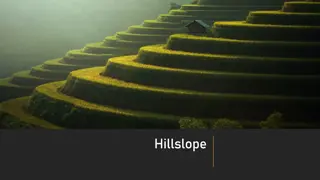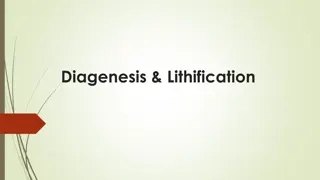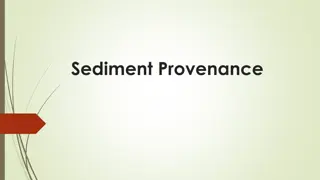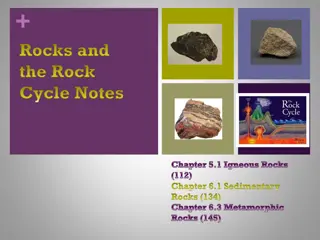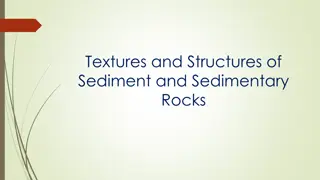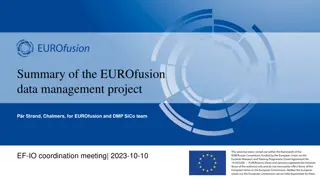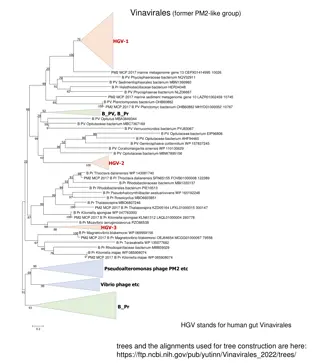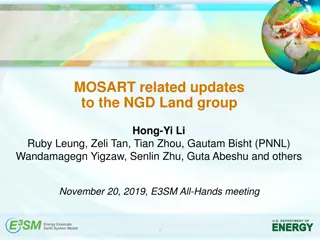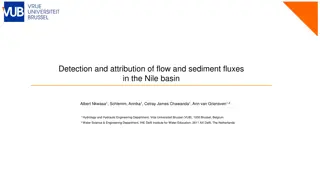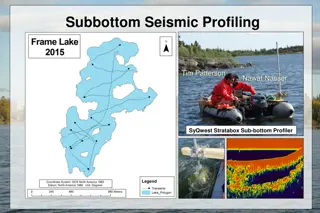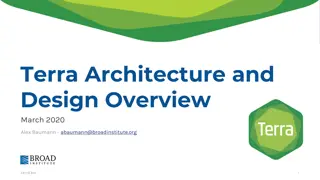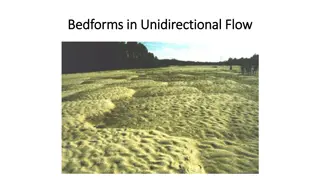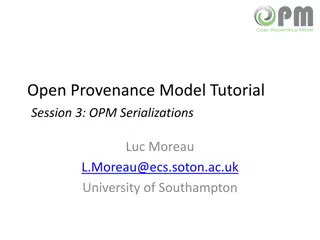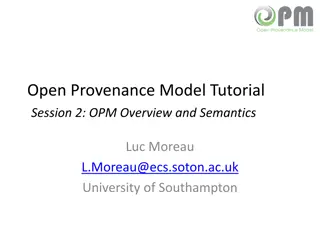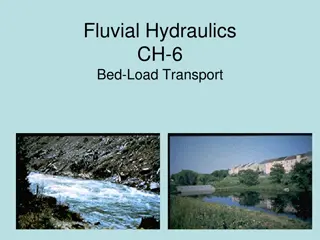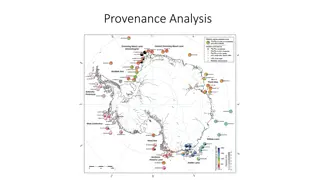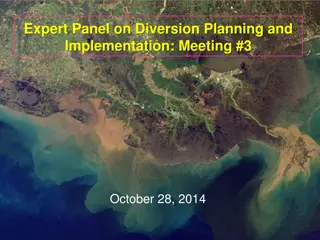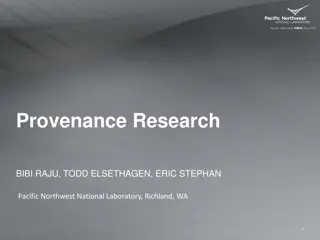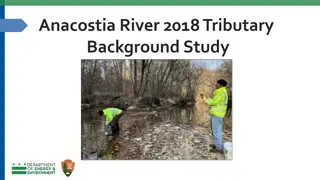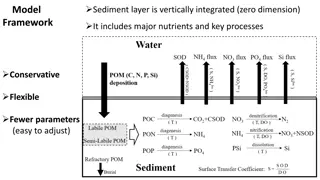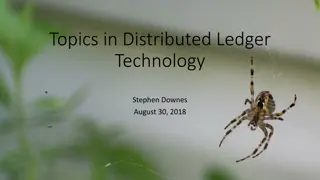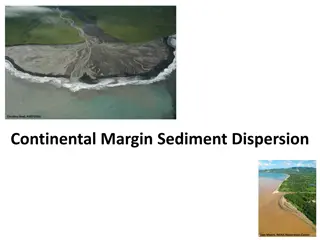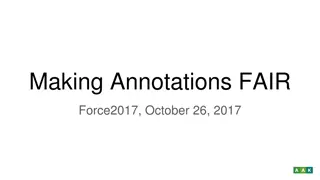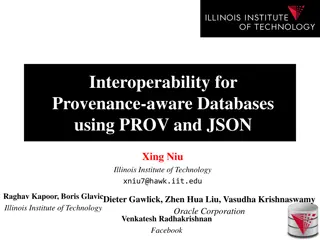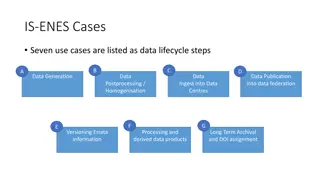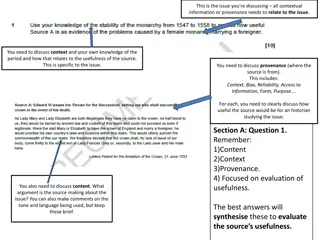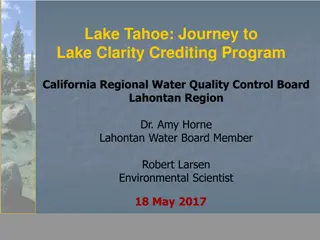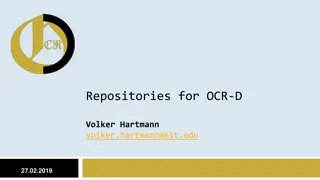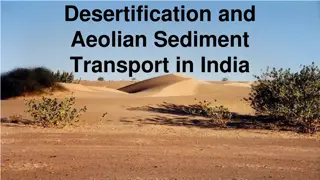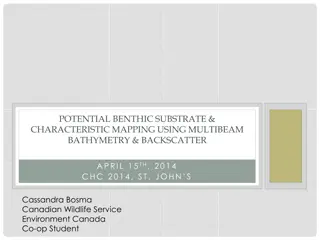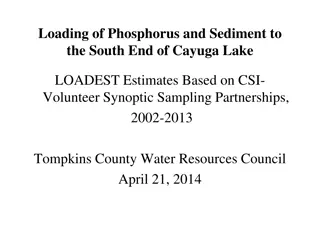Understanding Hillslopes and Their Significance in Geomorphology
Hillslopes are angular inclinations of terrain between hilltops and valley bottoms, shaped by geological structures, climate, vegetation cover, and denudational processes. They are key geomorphic features in fluvial drainage basins, playing a crucial role in landscape formation and water/sediment tr
6 views • 22 slides
Coastal Monitoring and Lessons Learned in Southwest England
Southwest England's coastal monitoring efforts, including the South West Coastal Monitoring program and lessons learned from the destruction of Hallsands in 1917 due to lack of understanding of coastal processes. The monitoring involves data collection on beach profiles, bathymetry, wave patterns, a
4 views • 15 slides
Understanding Alluvial Fans: Formation, Characteristics, and Morphology
Alluvial fans are cone-shaped landforms formed by streams carrying sediments from mountains onto plains. They are prominent in arid to semi-arid regions and vary in size from a few meters to over 150 kilometers. The different zones of an alluvial fan, including the fan apex and distal fan, display d
5 views • 9 slides
Understanding Diagenesis and Lithification in Sedimentary Rocks
Diagenesis and lithification are crucial processes that transform loose sediment into solid rock through compaction and cementation. Diagenesis involves various chemical, physical, and biological changes while lithification involves the pressure-induced consolidation of sediment. Compaction removes
0 views • 15 slides
Understanding Sediment Provenance in Geology
Sediment provenance in geology involves reconstructing the origin of sediments through compositional analyses to determine erosion history and geographical origins. It helps characterize the journey of sediments from source to sink, providing insights into tectonic and paleoclimatic histories. Prove
1 views • 11 slides
Designing Trustworthy Virtual Labs: Considerations and Reflections
Explore the characteristics and features crucial for designing trustworthy virtual labs, including transparency, provenance, and social aspects. Delve into the importance of trust in digital collaborations and co-productions. Reflect on balancing competing interests and the need for a nuanced approa
0 views • 7 slides
Understanding the Rock Cycle: Igneous, Sedimentary, and Metamorphic Rocks
This educational material covers the formation and characteristics of Igneous, Sedimentary, and Metamorphic rocks. It includes details on the processes involved, such as heat melting rocks into magma, sediment formation through erosion and deposition, and the differentiation between intrusive and ex
1 views • 16 slides
Understanding Sediment and Sedimentary Rock Textures
Discover the textures and structures of sediment and sedimentary rocks, including clastic and crystalline textures, primary and secondary textures, and the effects of compaction. Learn about sediment texture, differences in sedimentary rock texture, and the classification of grain sizes using the We
1 views • 20 slides
EUROfusion Data Management Project Summary
EUROfusion data management project led by P. Strand at Chalmers outlines a comprehensive data management plan with four scenarios of increasing ambition, from making metadata available to open access for non-embargoed data. The plan includes strategies for interoperability, data accessibility, enhan
0 views • 11 slides
Successful Channel Modification Techniques and Benefits
Channel modification projects aim to accelerate the recovery of stable, sustainable channel forms in dynamic balance with sediment, large wood, and flow regimes. Successful modifications lead to improved habitat quality, stability, and diversity, benefiting sediment transport and riparian zones. Phy
0 views • 15 slides
Overview of Vinavirales and Related Viral Groups
Vinavirales is a group of viruses that were previously part of the PM2-like group. The content discusses various species and bacterium within Vinavirales, as well as related groups such as Nucleocytoviricota and Virophages. It explores their presence in marine metagenomes, sediment environments, and
0 views • 7 slides
Latest Updates on MOSART Development and Validation
Updates on MOSART modules including heat, sediment, and lake features presented at the E3SM All-Hands meeting. Development progress, validation results, and ongoing/future work discussed for better water/heat balance coupling in deep water bodies like lakes and reservoirs. Detailed testing and valid
0 views • 9 slides
Detection and Attribution of Flow and Sediment Fluxes in the Nile Basin
This study aims to detect and attribute climate change impacts on flow and sediment loads in the Nile basin using climate data and hydrological models. The research focuses on historical data and involves evaluating models, completing paper writing, and finishing the detection and attribution analys
0 views • 4 slides
Environmental Impact Assessment of Frame Lake and Recommendations
The subbottom seismic profiling and stratigraphy studies reveal the sediment layers in Frame Lake and the impact of urban development on water quality. Glew coring analysis identifies layers of arsenic contamination. Recommendations include dredging to restore the lake's natural state pre-1975. The
0 views • 13 slides
Provenance Analysis of Algorithms - Understanding Data Dependencies
Exploring the concept of provenance analysis in algorithms to understand how output items depend on input items. This analysis goes beyond traditional activity logs, focusing on structured collections of items and exploring various applications for causal and quantitative analysis. The critical test
1 views • 16 slides
Local Programs for Erosion and Sediment Control: Guidelines and Certifications
Comprehensive information on the importance and implementation of local erosion and sediment control programs, including principles, standards, processes, and certification requirements. Emphasis on the need for local officials and personnel to have the knowledge and authority for effective program
0 views • 45 slides
Terra Architecture and Design Overview
Terra is a platform driven by the Data Biosphere vision to enable an ecosystem of interoperable components across organizations. It utilizes GA4GH standards and serves various roles such as Biomedical Researchers, Custom Apps & Portals, and Data Developers. The architecture is being restructured to
0 views • 8 slides
Bedforms in Unidirectional Flow: Characteristics and Formation
Bedforms in unidirectional flow exhibit various characteristics such as sediment layer thicknesses, boundary layer dynamics, presence of ripples and dunes, and the interplay between flow velocity and sediment deposition. These bedforms, including ripples and dunes, form due to interactions between t
3 views • 13 slides
Overview of Open Provenance Model Tutorial Session 3
Explore Session 3 of the Open Provenance Model Tutorial, covering topics like the XML Schema for OPM, OWL ontology, OPM Layered Architecture, XML Binding, RDF Binding, and more. Dive into OPM Layered Model, XML Binding, OPM Graph, OPM Process, and OPM Artifact to understand specialized domains and e
0 views • 22 slides
Understanding Open Provenance Model (OPM) in Session 2
Dive into Session 2 of the Open Provenance Model tutorial to grasp the abstract model of OPM, its inferences, and efforts to imbue it with semantics. Explore OPM requirements, non-requirements, domain specialization, and its core layers. Discover how OPM allows for precise exchange of provenance inf
0 views • 51 slides
Understanding Sediment Transport in Fluvial Hydraulics
Sediment transport equations play a crucial role in predicting sediment capacity under different flow conditions, aiding in various analyses like aggradation, degradation, scour, deposition, and migration. Different formulas cater to varied scenarios, distinguishing between bed load and suspended lo
0 views • 82 slides
Understanding Sedimentary Rock Characteristics: Provenance and Weathering
Explore the significance of provenance analysis in interpreting the origin of sedimentary rocks based on lithological characteristics. Learn about mechanical and chemical weathering processes, compositional and textural maturity, mineral stability during weathering, and how rock particles indicate t
0 views • 12 slides
Understanding Sedimentology: An Overview of Sedimentary Processes and Rocks
Sedimentology is the study of modern sediments like sand, mud, and clay, along with the processes involved in their deposition. Sedimentologists use this knowledge to interpret Earth's geologic history through sedimentary rocks and structures. Sediment plays a crucial role in enriching soil with nut
0 views • 27 slides
Italian Illustrated Editions and Provenance Research Projects
Research projects at Cambridge University Library focused on Italian illustrated editions, bibliophilia, book trade, and provenance information of incunabula. Work involved updating records, organizing provenance data, and collaborating on cultural web portal projects supported by Sapienza Universit
0 views • 7 slides
Expert Panel on Diversion Planning and Implementation Meeting Report
A detailed overview of the Expert Panel on Diversion Planning and Implementation Meeting including its purpose, composition, authority, and focus on providing technical advice for freshwater and sediment diversion projects, particularly in the Mississippi River and Louisiana restoration efforts. The
0 views • 10 slides
Enhancing Provenance Research for Reproducibility and Performance
Explore the development of provenance research at the Pacific Northwest National Laboratory, focusing on goals, methodologies, and plans for incorporating time-series metrics to increase scalability and performance. Collaboration with ACME IPPD Panorama is highlighted, showcasing advancements in cap
0 views • 6 slides
Anacostia River Tributary Sediment Study 2018
This study focuses on analyzing bottom sediment samples from five major tributaries of the Anacostia River to determine concentrations of contaminants of concern (COCs) and identify possible point sources of pollution. The research aims to establish anthropogenic background concentrations, compare t
0 views • 10 slides
Integrated Sediment Model for Nutrient Processes in Chesapeake Bay
This sediment model framework integrates major nutrients and key processes in a vertically integrated, zero-dimensional scheme. It is characterized by its conservative and flexible nature, with fewer parameters making adjustments easy. The model includes a scheme for POM remineralization and finds a
0 views • 8 slides
Understanding Distributed Ledger Technology Concepts
Distributed Ledger Technology (DLT) involves core concepts like assets, ledgers, transactions, states, conditions, and inferences. It also includes distributed ledgers, cryptographic hash functions, construction of a blockchain, consensus mechanisms like proof of work, and examples of applications s
0 views • 27 slides
Understanding Sediment Dispersion along the Continental Margin
This content explores the influences and types of sediment dispersion systems along the continental margin. Processes affecting sediment supply, depositional environments, and different dispersal systems like Estuarine Accumulations Dominated and Marine Dispersal Dominated are discussed. Walsh and N
0 views • 8 slides
The FAIR Principles for Data Management and Stewardship
Embrace the FAIR principles - Findable, Accessible, Interoperable, Re-usable - for effective scientific data management and stewardship. Learn how annotations enhance data FAIRness and the key attributes of each principle. Dive into the high-level guiding principles that ensure data is globally uniq
0 views • 25 slides
Interoperability for Provenance-aware Databases Using PROV and JSON
This research paper discusses the challenges in tracking database provenance and proposes a system, GProM, that computes provenance for database operations. It highlights the importance of exchanging provenance information between systems and the limitations of current relational database systems in
0 views • 28 slides
Challenges in Developing a Coherent Provenance Architecture
In the IS-ENES Cases, challenges arise in establishing a formal model for provenance architecture across various data lifecycle steps. The need for a coherent approach is emphasized to manage provenance information artifacts effectively. These challenges demand the creation of a structured framework
0 views • 11 slides
Evaluating Sources on Female Rule in the 1550s
This analysis focuses on assessing the reliability and usefulness of historical sources discussing the issue of female rule in the 1550s. It evaluates the content, provenance, and context of the sources to determine their relevance for historians studying the topic. The sources provide insights into
0 views • 8 slides
Understanding Lake Tahoe's Environmental Challenges
The Lake Tahoe Total Maximum Daily Load (TMDL) program aims to restore Lake Tahoe's clarity by addressing pollution sources such as nitrogen, phosphorus, and fine sediment particles. The program involves a science phase, regulatory strategy phase, and implementation phase to reduce pollutant loading
0 views • 27 slides
Managing Research Data Repositories for OCR-D
Research data repositories play a crucial role in the OCR-D framework, storing and managing data from document analysis processes. These repositories, like the Ground Truth (GT) repository, support FAIR principles by organizing findable, accessible, and retrievable data with metadata and provenance
0 views • 11 slides
Understanding Food Provenance and Consumer Awareness
Exploring the importance of food provenance, this article delves into how consumers can learn about the origins of their food and why traceability is crucial. Discover the significance of labels, consumer power, and the impact of imports and exports on the food industry. Gain insights into where our
0 views • 10 slides
Understanding Desertification and Aeolian Sediment Transport in India
Climates in India, particularly in the desert areas like Rajasthan, are heavily influenced by the monsoon season, with 32% of the land facing the threat of desertification. The upward eddie wind currents in the region can lift silt and very fine sand up to 4km. Various factors contribute to desertif
0 views • 17 slides
Understanding Benthic Substrate Characterization Through Multibeam Bathymetry
Utilizing multibeam bathymetry and backscatter data, this project focuses on mapping potential benthic substrates in marine environments. The history, procedures, and possible classification schemes are discussed, highlighting the importance of analyzing backscatter data for sediment classification.
0 views • 28 slides
Estimation Methodology for Phosphorus and Sediment Loading in Cayuga Lake Watershed
Explore the process of estimating phosphorus and sediment loading at the south end of Cayuga Lake using LOADEST methodology. Learn how to combine synoptic monitoring data with USGS flow measurements and run calculations to obtain yearly load numbers. Get step-by-step instructions and access helpful
0 views • 13 slides
